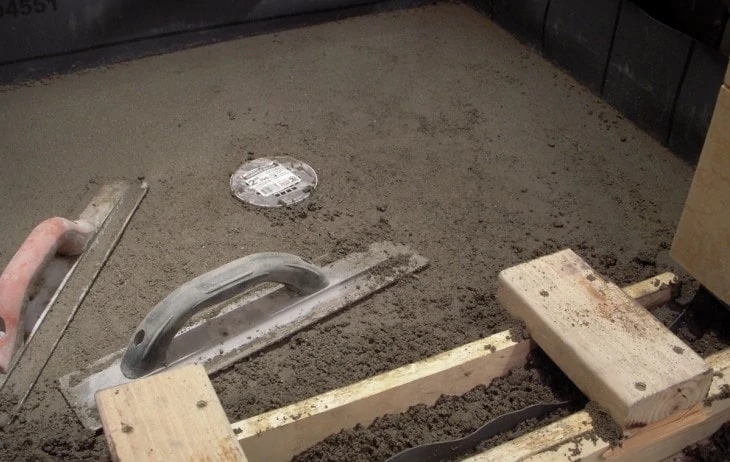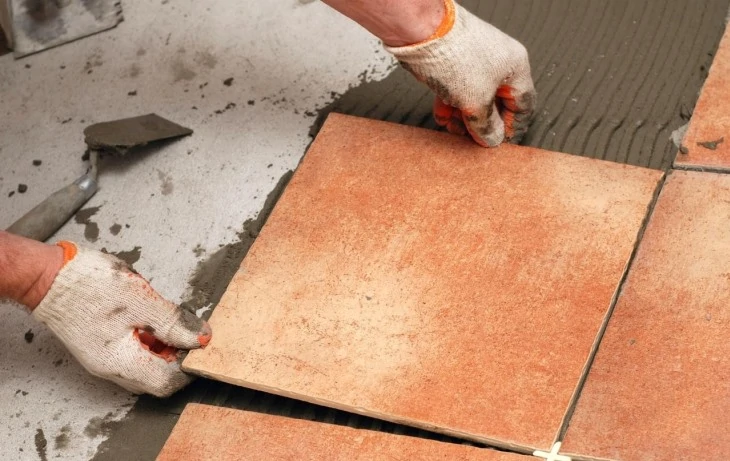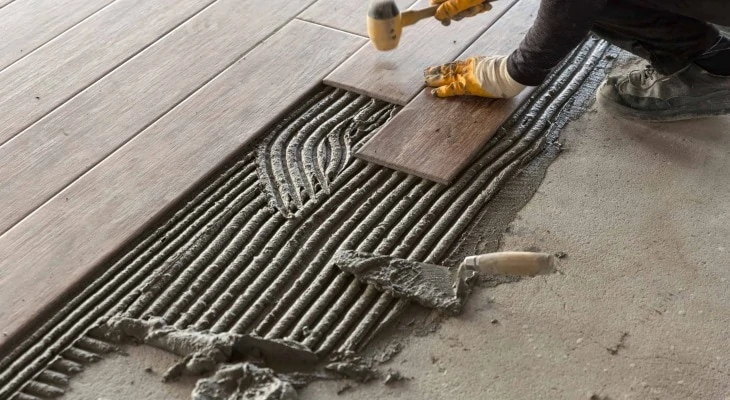Timing is everything! The same is true for bathroom and floor installations and renovations. Mud bed is often the foundation for bathroom floors and fixtures. How much time does mud bed need to dry before tile installation?
What do you need to know about mud bed before you get started? What’s the difference between drying and curing? Is it necessary to allow mud bed to cure before tiling? We’ll answer all these questions and more!
Mud bed is a leveling mortar that is used as a foundation for floors and underneath fixtures, such as showers and bathtubs. It needs to dry before tile can be installed on top of it. Mud bed will be fully dry at 24 hours, and fully cured at 28 days. It’s best to install tile either before the mud bed is fully dry, or after it is fully cured.
Table of Contents
What is a Mud Bed?

Mud Bed is also commonly known as Deck Mud. It is a mixture of graded sand and cement that is used as a leveling mortar.
Mud bed is used on both interior and exterior construction projects for floors, the foundation for showers or bathtubs, and countertops. Usually tile, or another similar product is laid on top of the mud bed.
How Much Drying Time Does Mud Bed Need?
Mud bed dries relatively quickly. Typically, it will be dry in about 24 hours, depending on the temperature and humidity levels. It shouldn’t take any longer than 28 hours. Ideal temperatures for mud bed installation are 70 degrees Fahrenheit (21 degrees Celsius) and around 55 percent humidity.
How Much Curing Time Does Mud Bed Need?
Mud bed will be fully cured after 28 days. At this point, it can bear weight and withstand varying temperatures.
What’s the Difference Between Drying and Curing?
A dry mud bed will feel hard to the touch. It will no longer be damp or tacky. After 24 hours, the mud bed is dry, but it is still considered ‘green’.
Mud bed is not fully cured until 28 days after installation. Curing refers to the process where the mud bed completely forms its final shape and stability.
Why Does Mud Bed Need to Cure?
A ‘green’ mud bed may alter its shape with too much pressure or weight. By allowing it to cure, the mud bed will be sturdy and stable.
When is the Best Time to Install Tile?

There are two windows of opportunity to install tile on a mud bed. Tile can be installed about 16 hours after the mud bed installation. At this point, the mud bed is still slightly damp, but not completely wet.
Be cautious not to alter the level of the mud bed if you install tile at this point. Tile should not be installed on a mud bed after the 24-hour mark.
The next window of opportunity to install tile on a mud bed is 28 days after installation. At this point, the mud bed is fully cured, and ready for the next phase of the project.
How Thick Should I Install Mud Bed?
Ideally, mud bed should be around 3/16 of an inch. Tile will adhere best to a thin layer. However, mud bed is also used to level floors and shower bases. Therefore, some areas may need to be thicker than others.
If you are using mud bed underneath a shower pan or base, make sure to calculate slope. The floor of the shower or bath needs to be slightly sloped towards the drain so that all the water will drain properly.
Don’t worry! If your mud bed is thick, just make sure to allow for extra drying and curing time.
Final Thoughts
Mud bed is a great way to level uneven floors and create a sturdy foundation for tile or bathroom fixtures. It’s important to read all the instructions before installation! Either lay the tile before the mud bed is fully dry, or wait until after it is cured for the best results. Enjoy your newly updated floor!

